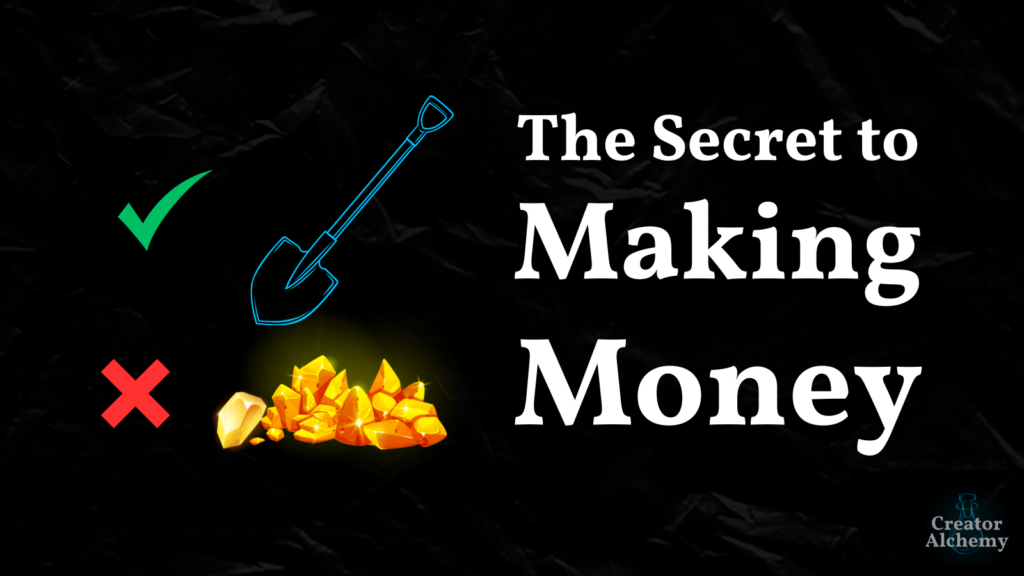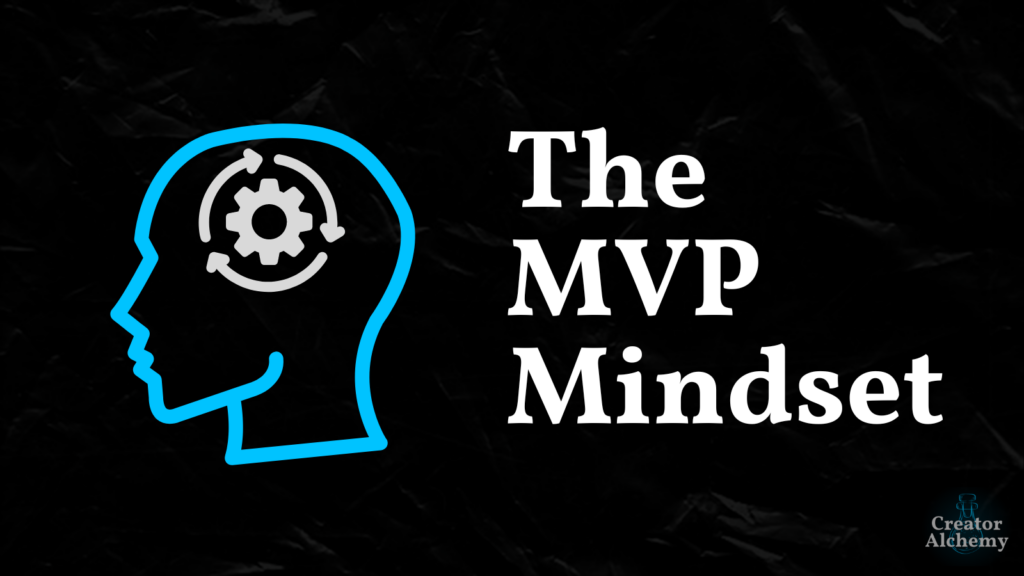How much clarity do you have on the type of content you create, and who you create it for?
Does the content you create actually do what you want it to do, like building your reputation as a thought leader in your area, attracting an audience, or converting customers and clients?
Or does it just kind of dangle limply in the wind of the internet—a ghostly gossamer of good intention?
What if you could create content your ideal audience loves and weave everything you do together, so everything you create—free and paid—connects with everything else?
I struggled with this for years.
It seemed like nothing I created resonated with people. No one loved it because it was just ok—nothing great or memorable.
I tried the typical advice everyone shouts like:
Niche down!
Build a value ladder!
Know your customer avatar!
But something was missing—I couldn’t find the throughline that connected everything I created.
See, I’m prone to overanalyzing pretty much everything. It’s one of those gift/curse things. I like to think through how all the pieces connect before I commit to a project.
But because I couldn’t connect it all together, I felt lost, overwhelmed, and confused.
I had:
- Creator Alchemy—my free newsletter
- Build an Intentional Life—a course to help people build a life and business aligned with their Core Value
- World-Class Coaching—a course to help people learn the skills to charge people $500 an hour as a coach
- Private coaching—for creators who wanted a tailored approach to achieving their goals
Plus future projects like a podcast, books, and other courses I plan to build.
But I didn’t have a framework that connected everything.
How did it all fit together?
How could I weave it all to fit together, along with future stuff I create—so that everything I create resonates with my ideal audience?
I’m a fan of psychological razors—mental models that organize, visualize, and articulate something profoundly helpful.
So I scoured the internet and books to find ones that could help.
If you’re struggling to figure out how to create content that resonates with your ideal audience and connects with everything else you create, I hope my journey can help you develop clarity.
After years of searching, here are the 4 psychological razors that have been the most helpful…
•••
Hormozi’s Hierarchy
The first razor I found was from Alex Hormozi.
He was a successful entrepreneur before getting into the content game, so he came into the Creator Economy with a different perspective and strategy.
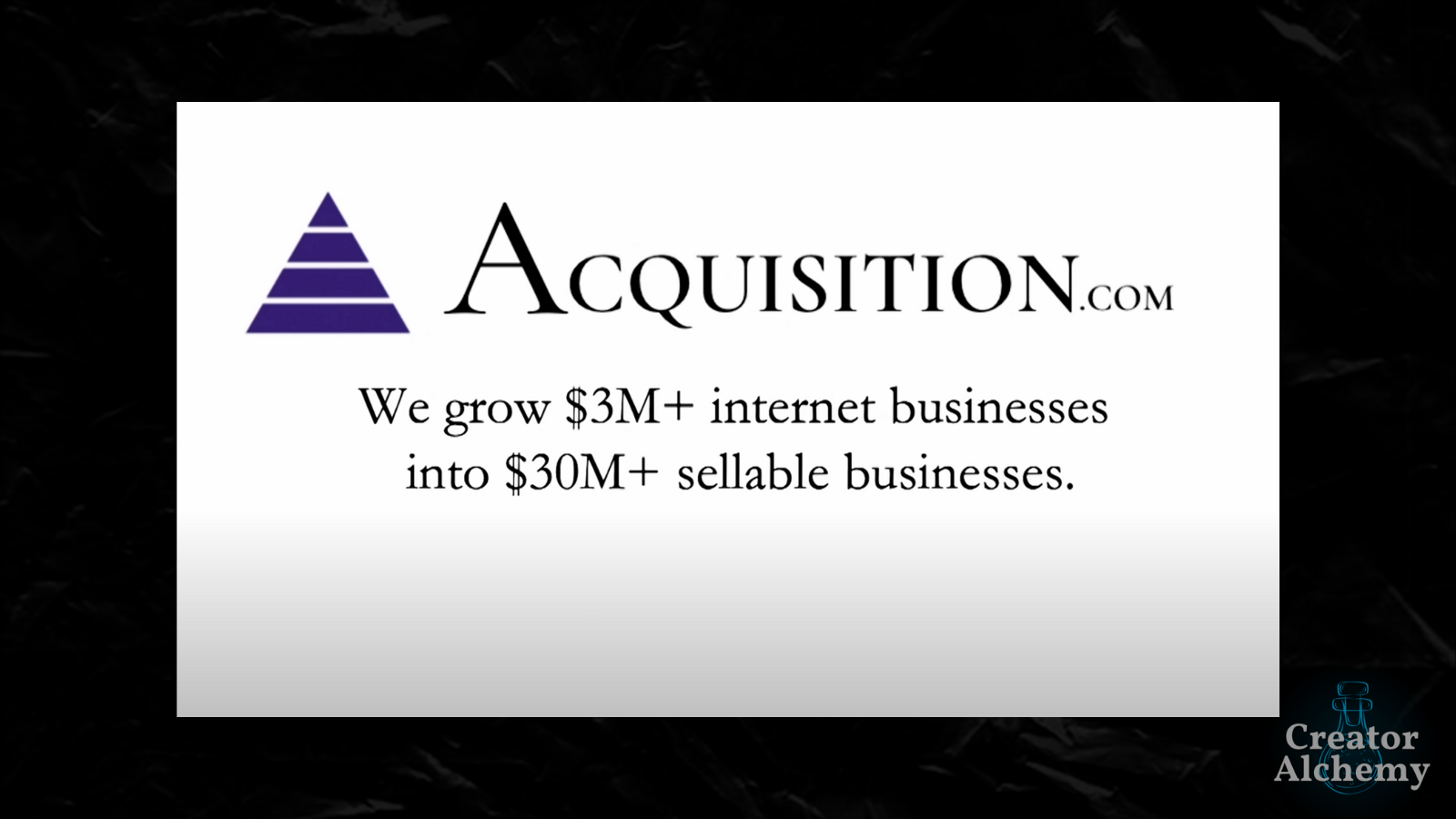
Instead of charging for his content, he makes everything free (minus publishing costs for his books).
Why?
Because his goal is to work with companies making over $3 million a year and help them get to $10-$30 million.
So all his free content educates people and gives them the strategies to build a $3M business.
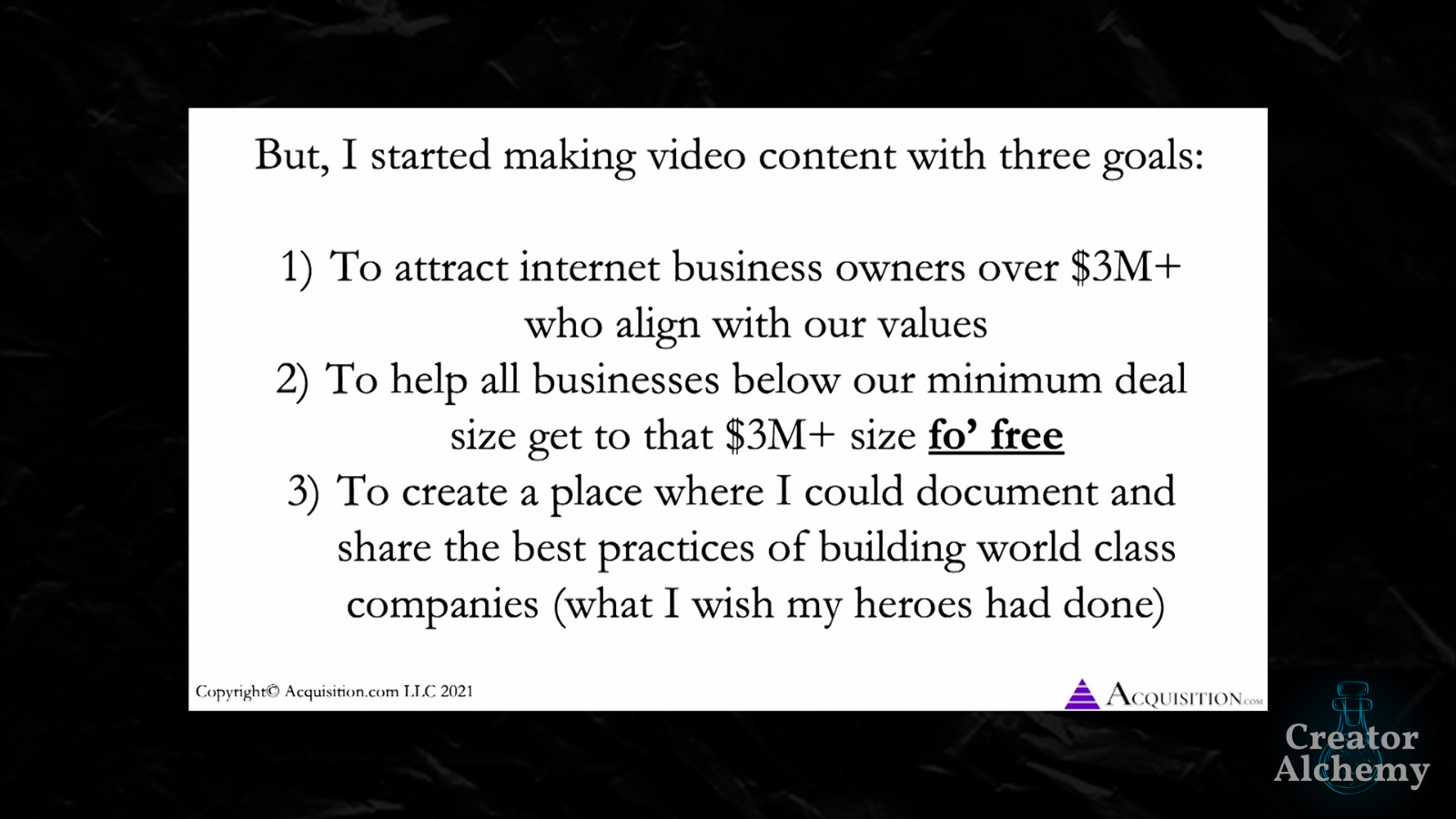
Because once they hit that number, then they’re qualified to work with him.
Also, if his free stuff helped you build a $3M business and he goes, “Hey, I’ll give you this much money for X% stake in your company to help you grow it 10X,” you’d be like, “Hell yeah!”
Because he’s proven competence and built trust.
It’s a great model because you essentially use all your free content to “qualify leads” to your paid offers.
He also focuses on “how I” instead of “how to” content. Meaning he isn’t prescriptive or claim “this is the only way to do X.” Instead, he shares what’s worked for him personally in the hopes it can help his audience.
Which is a great way of showing up with integrity and building further trust with your audience.
So I plugged my content into this hierarchy and came up with this:

My free content would target Stage 1, or beginner, creators to help them overcome common issues beginners face and “qualify” them up to my paid offers.
My paid stuff would target Stage 2, or beginners ready to go pro or invest in themselves and their business.
Which freed up 1:1 coaching for Stage 3, or pro creators who want to skyrocket their growth.
It seemed like a solid strategy:
- When I need to write another newsletter issue, I can ask, “What’s something Stage 1 creators would find valuable?”
- When I want to create another course, I can ask, “What unmet needs do Stage 2 creators have?”
- When I think about updating my coaching landing page or pricing, I can ask, “What’s the most expensive, specific problem Stage 3 creators need help with?” If they have a $100k problem, paying $10k to solve it is a no-brainer.
This model works for tons of creators because beginners are always the largest demographic in any niche, so there’s always a huge audience waiting to consume your free stuff and invest in your paid stuff.
But most low-hanging fruit content like this is saturated. You have to be the best, or super different, to stand out.
But Corey, saturated is just another word for proven demand.
Yes, but it’s also just not the type of content that gives me a ton of energy. When you consistently do things that don’t give you energy—or worse, drain your energy—you’ll burn out. The biggest thing I’ve learned about being a creator—you have to find ways to stay in the game if you want to succeed long-term. Anything that threatens your ability to stay in the game long enough to see real compounding, avoid as much as possible.
I realized I didn’t want to exclusively do articles about how to warm DM people or create a welcome sequence people love. Those are great resources, and I’m down to still write them occasionally. But there’s nothing truly unique about them—no nuance or epiphany I can help my ideal audience have—even if I inject my own experiences into it. I’d mostly be repeating myself, while I’d rather spend my time coming up with novel ideas.
Plus, there are tons of awesome people already killing this type of content, and I’d rather just recommend their stuff than create a knock-off version of it.
So as good as this model is, I kept looking…
•••
Molina’s Magnet
Another issue with targeting beginners that I ran into, and have seen tons of creator friends run into, is that beginners tend to be scattered and broke.
Meaning they are all over the place flitting from one resource to another without fully investing themselves in applying a concept before Shiny Object Syndrome or FOMO knock them off course again. And even if they come across your paid stuff, they may not be ready (emotionally or financially) to invest, especially if your paid stuff comes with a premium price tag.
Then I came across a model by JK Molina: What he calls “fish bait vs. whale bait.”
I know tons of creators who have hundreds of thousands of followers across channels.
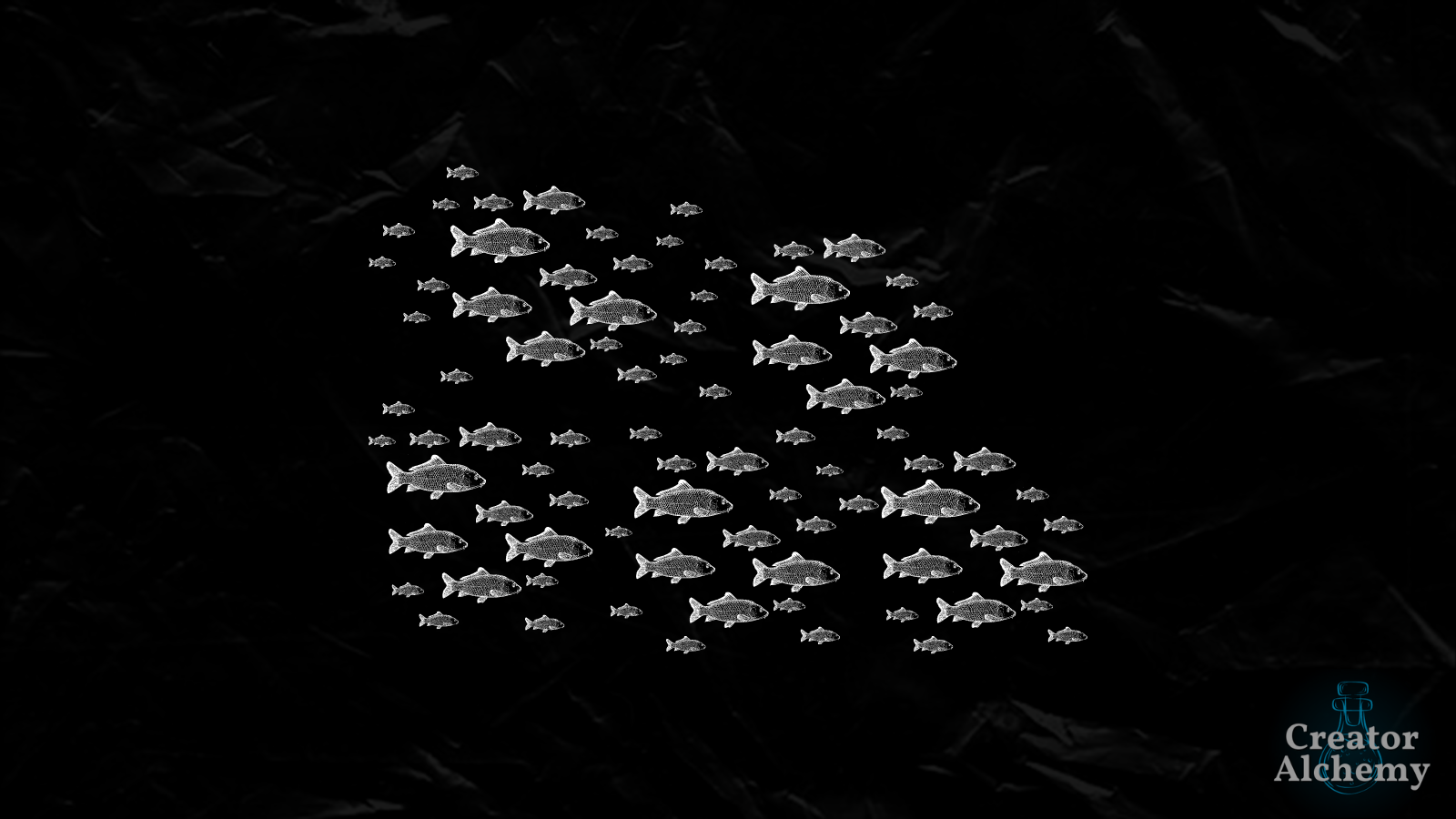
But they can’t monetize.
Because, in JK’s words, they’ve built an audience of fish—people who have a fleeting interest in your content, occasionally nibble, but never fully bite.
I talked to a creator the other day who said they couldn’t even get their audience to buy a $10 digital product…
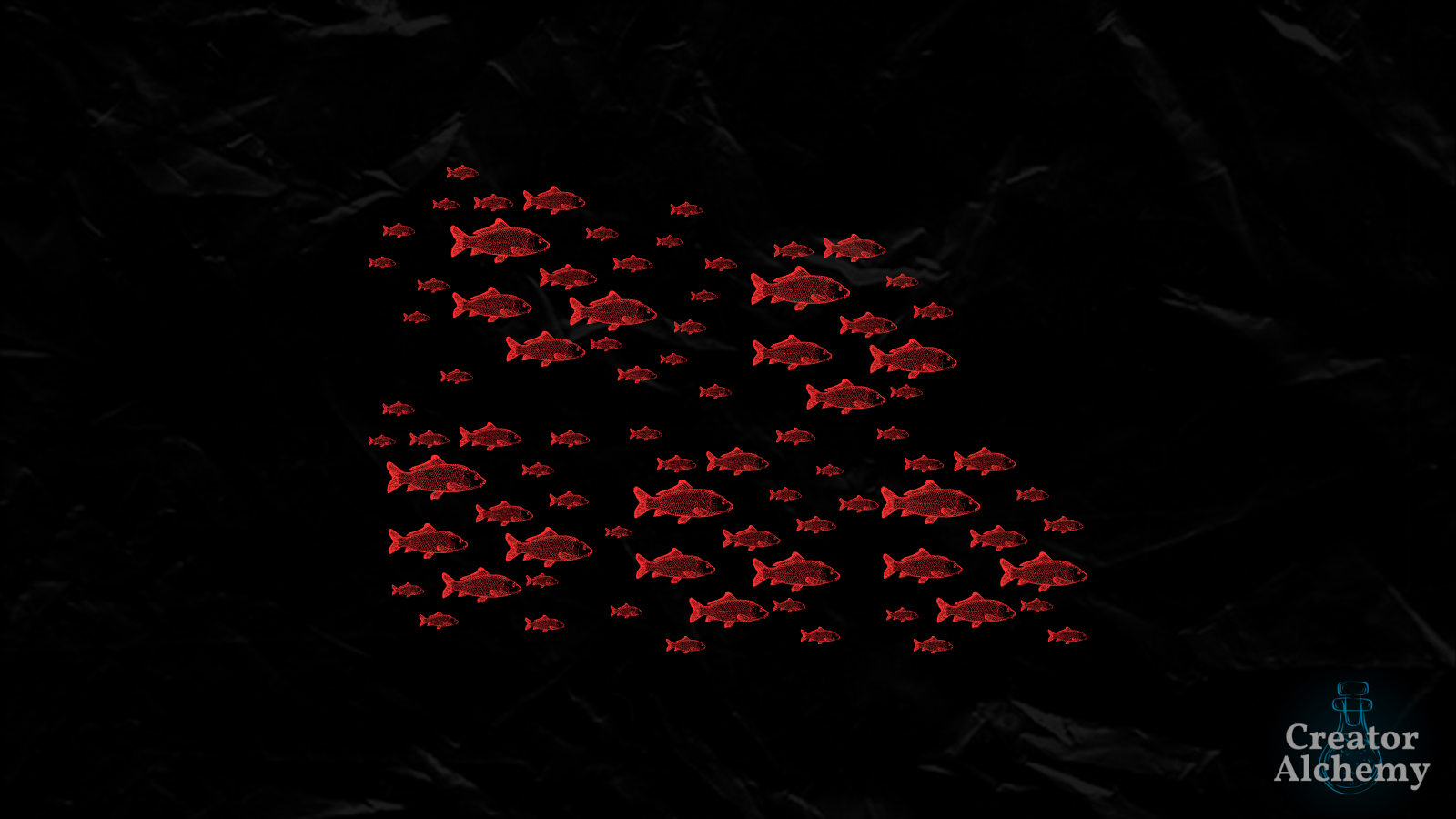
So you’re stuck building cheap products for a broke audience instead of building premium offers that attract people willing to invest their time, money, and attention into fully engaging with your offer and getting kickass results (which you can then leverage in the form of testimonials and case examples to attract others like them).
These are what JK calls whales.

So instead of using bait that attracts fish, your content should be “whale bait.”
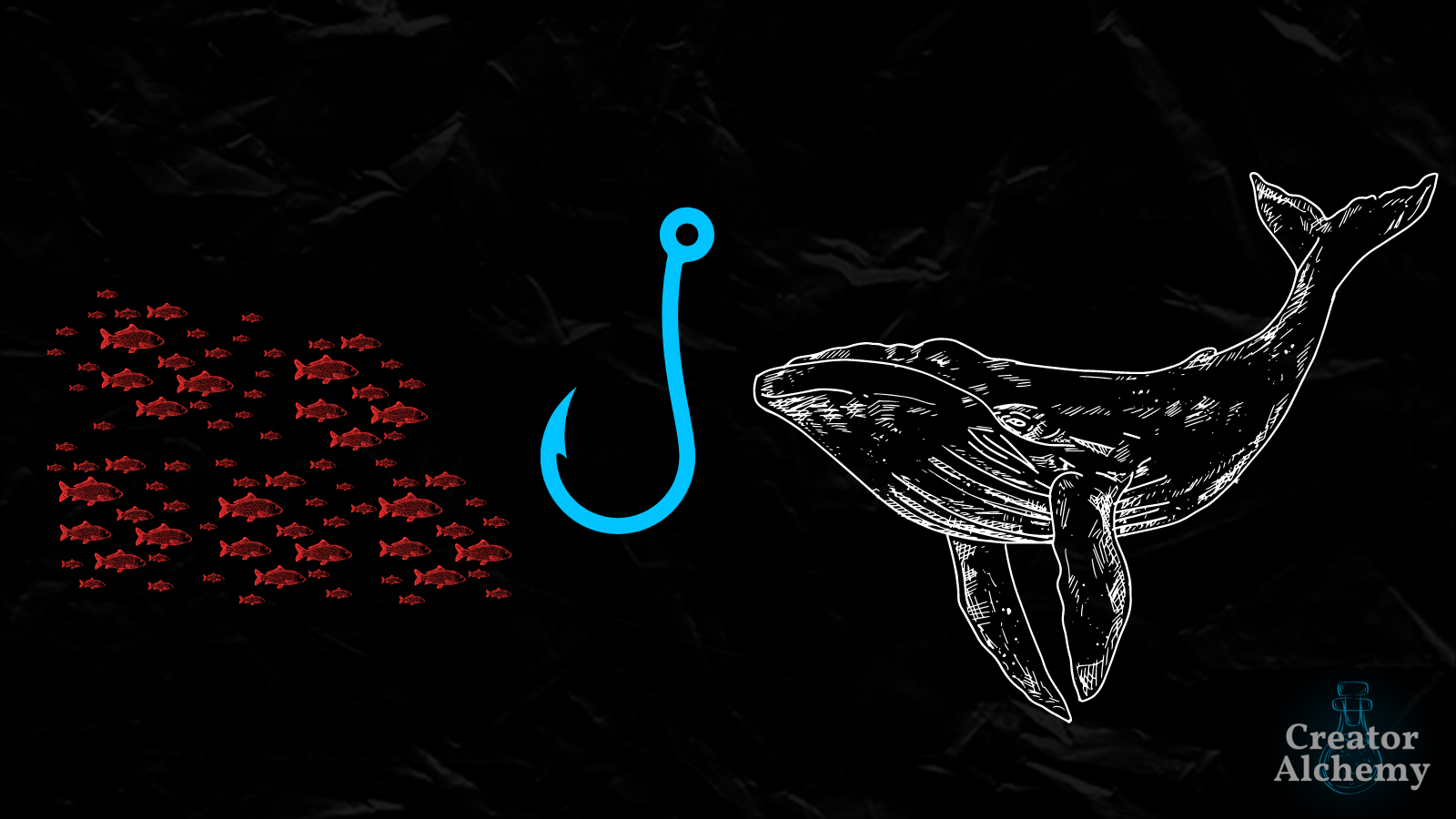
But how do you do this?
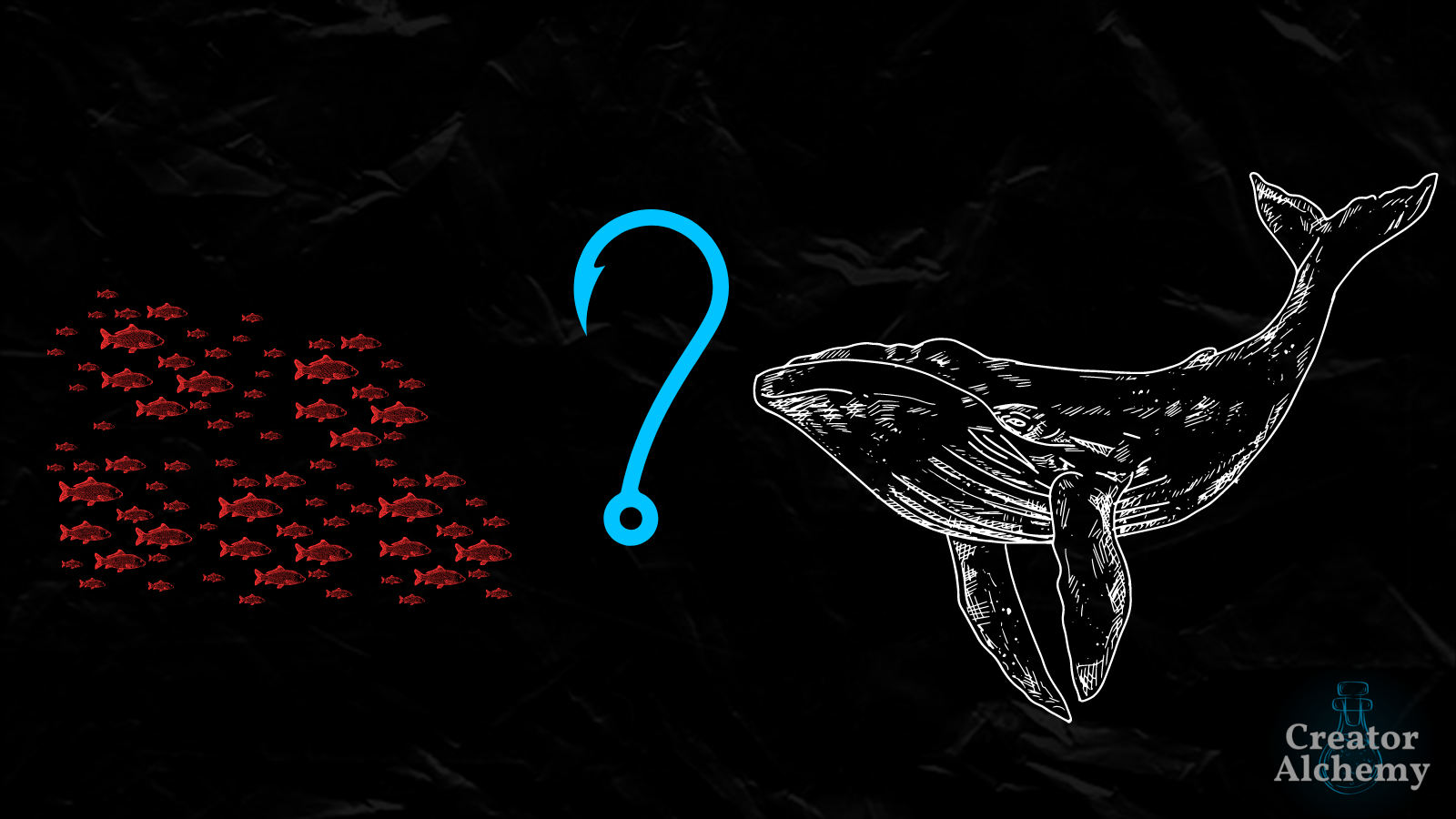
One example JK gives is if you want to help people making $10K a month scale to $30K per month. If you make a thread on “7 ways to make $10K a month,” you won’t attract people already making that much.
This kind of content is “fish bait” because it attracts people who aren’t making much money, and thus don’t have money to invest in your paid offers.
Instead, he suggests you create content that specifically attracts “whales” and repels “fish.”
So you might make a thread that targets people already making $15K per month and give them tactical ways to scale up to $30K. These strategies likely wouldn’t apply to people making less because they might require building a team, paid ads, and other forms of scaling that people at a lower revenue bracket just wouldn’t be able to access.
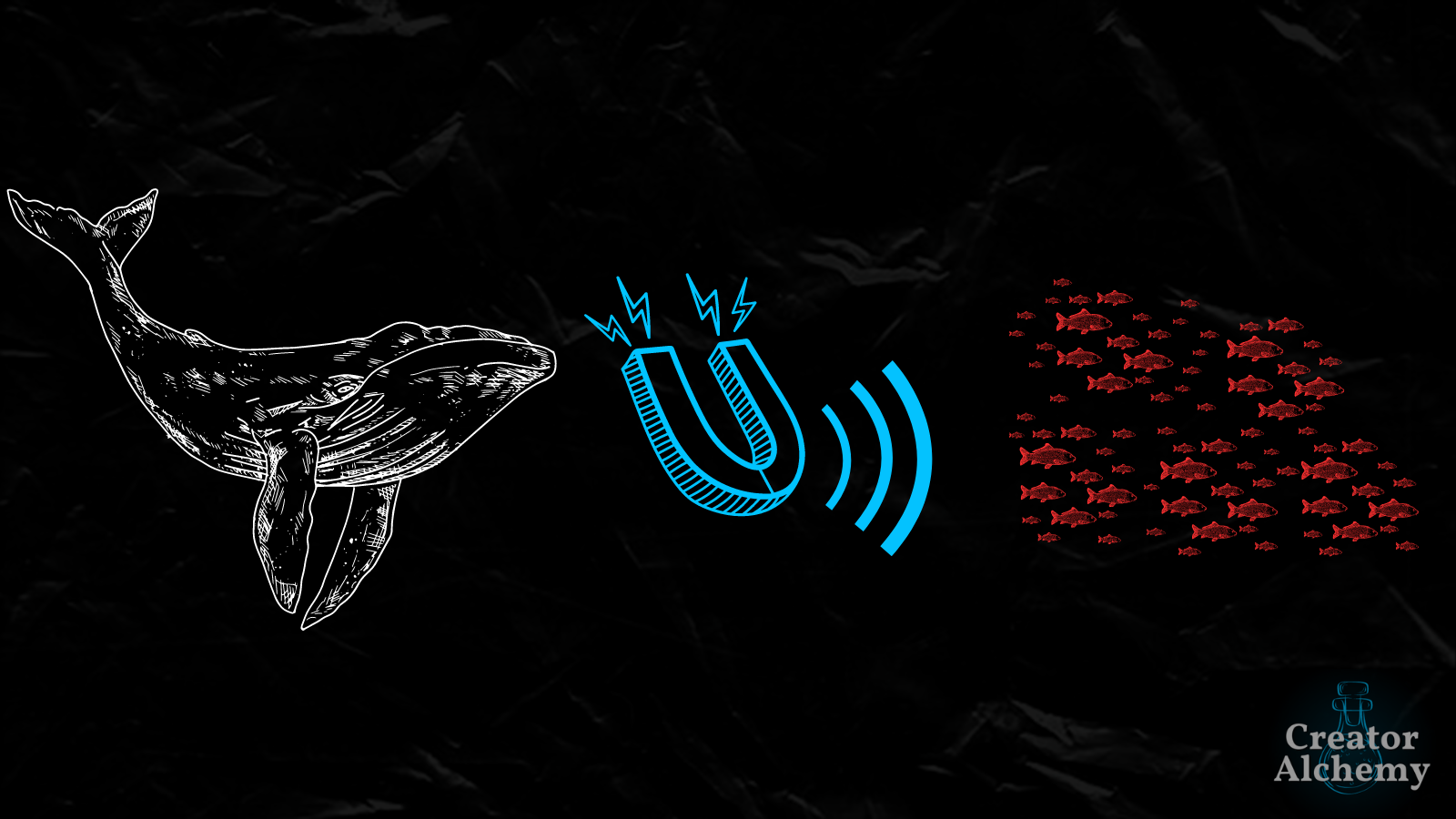
But it would be super attractive for whales, aka, your ideal audience that can afford your rates.
It’s a great model that’s serving him and his clients well.
But the issue with this model, for me, is it focuses on service businesses. Yes, I’m a coach, but I only work with like 3 clients at a time.
And I have an issue with making non-inclusive content. I grew up poor af, so I fully know what it feels like to feel out of place and be held back by gatekeeping.
I don’t want my content to make people feel “othered” or excluded.
I don’t give a shit if this goes against every copywriting/business playbook. I have to do everything with integrity, and only ever putting out content that exclusively helps “whales” and repels “fish” isn’t how I want to show up in my work.
Don’t get me wrong, this is a solid strategy and JK is killing it. You could become super successful just with this strategy.
It’s just not the one for me.
So I kept searching…
•••
Godin’s Gauge
Word of mouth is one of the best ways for your ideas to spread. Whether you’re targeting beginners or “whales,” you need to find a way to get people sharing your ideas if you want more people to discover them.
Because the more people who discover (and enjoy) your work, the larger your audience, impact, and income.
One of the simplest models I found to do this is to create content that Seth Godin calls remarkable.
Meaning, it’s worthy to be remarked upon, aka, people want to talk about it.
Unlike Hormozi’s Hierarchy where you target beginners, or Molina’s Magnet where you target wealthier people, Godin’s Gauge recommends targeting the “innovators and early adopters” within your niche.
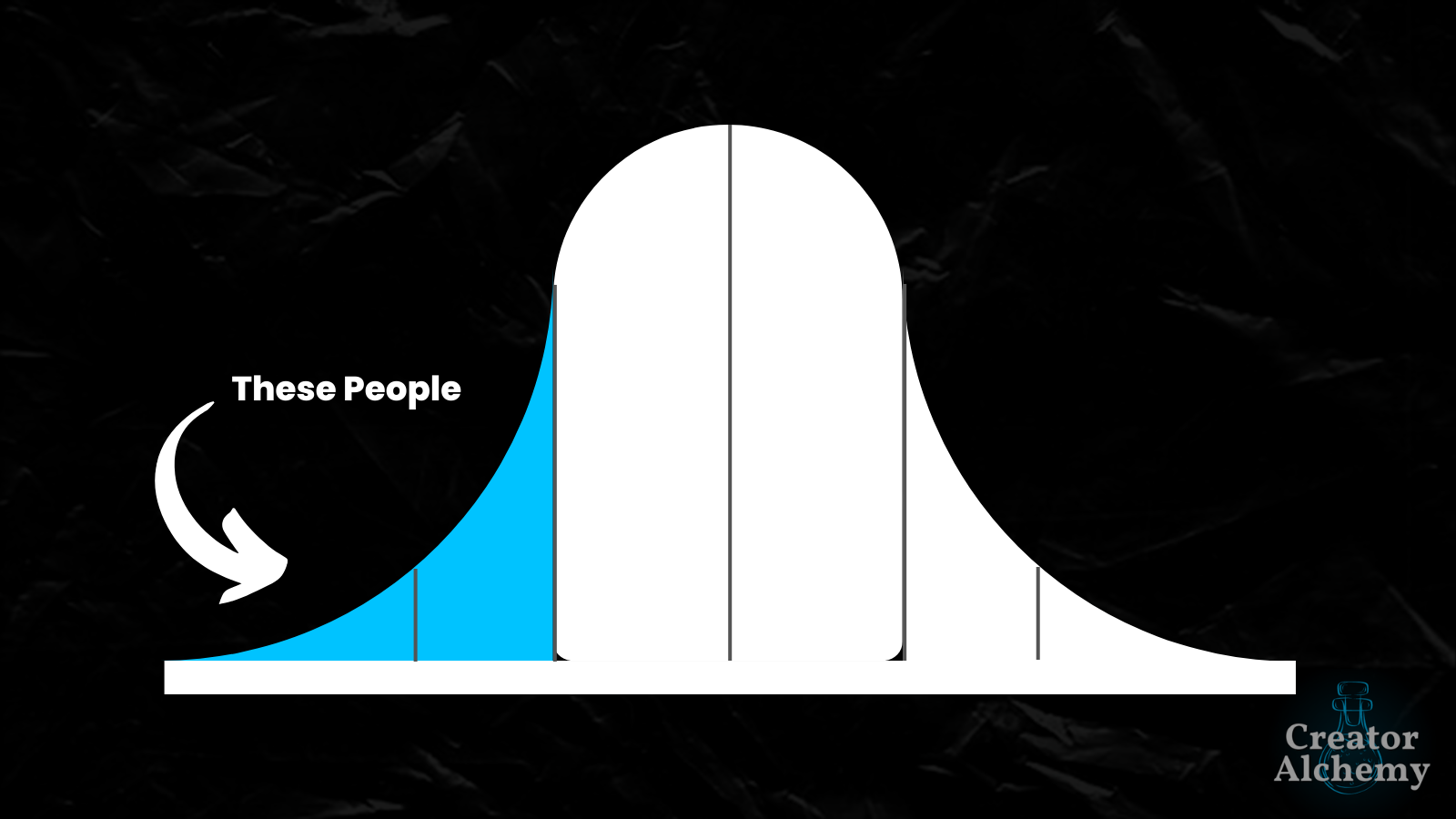
Because if they love it, they’ll tell everyone else.
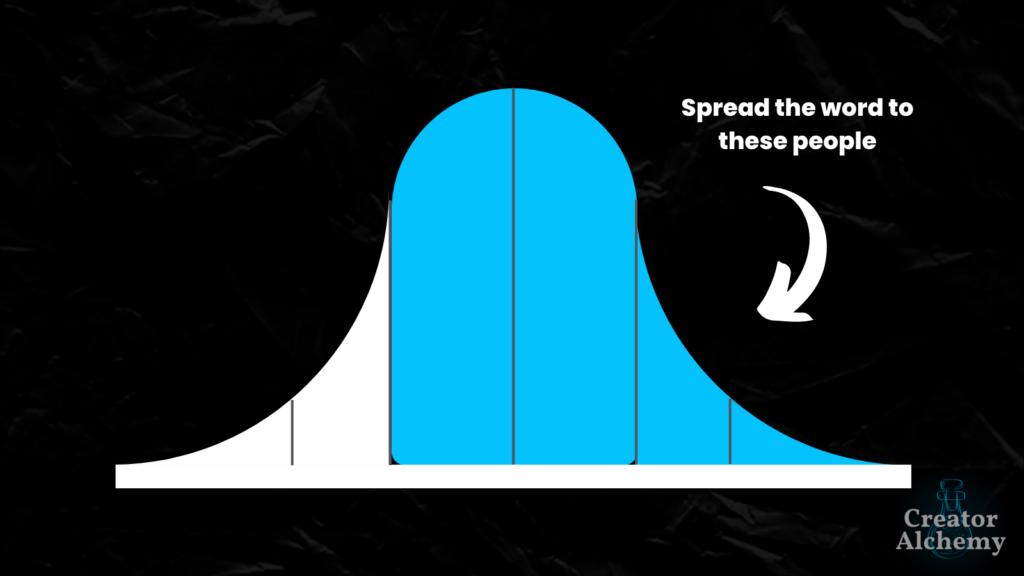
So how do you create remarkable content?
One way Godin describes it is with cows.
Let’s say you’re driving down the road and see a bunch of brown cows.
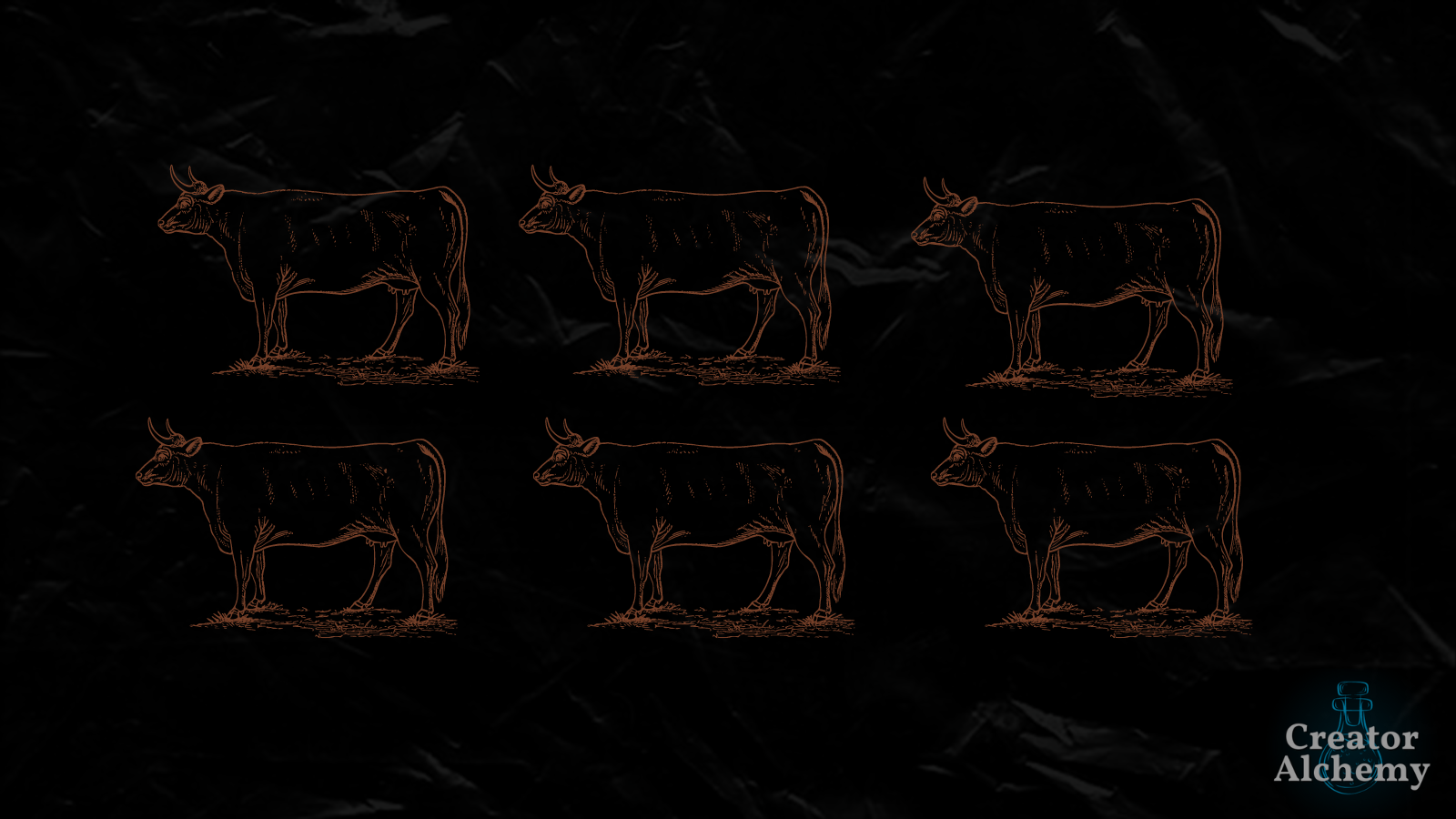
How remarkable is that?
If I had to gauge its remarkability, it’d be pretty low—aka, unremarkable.
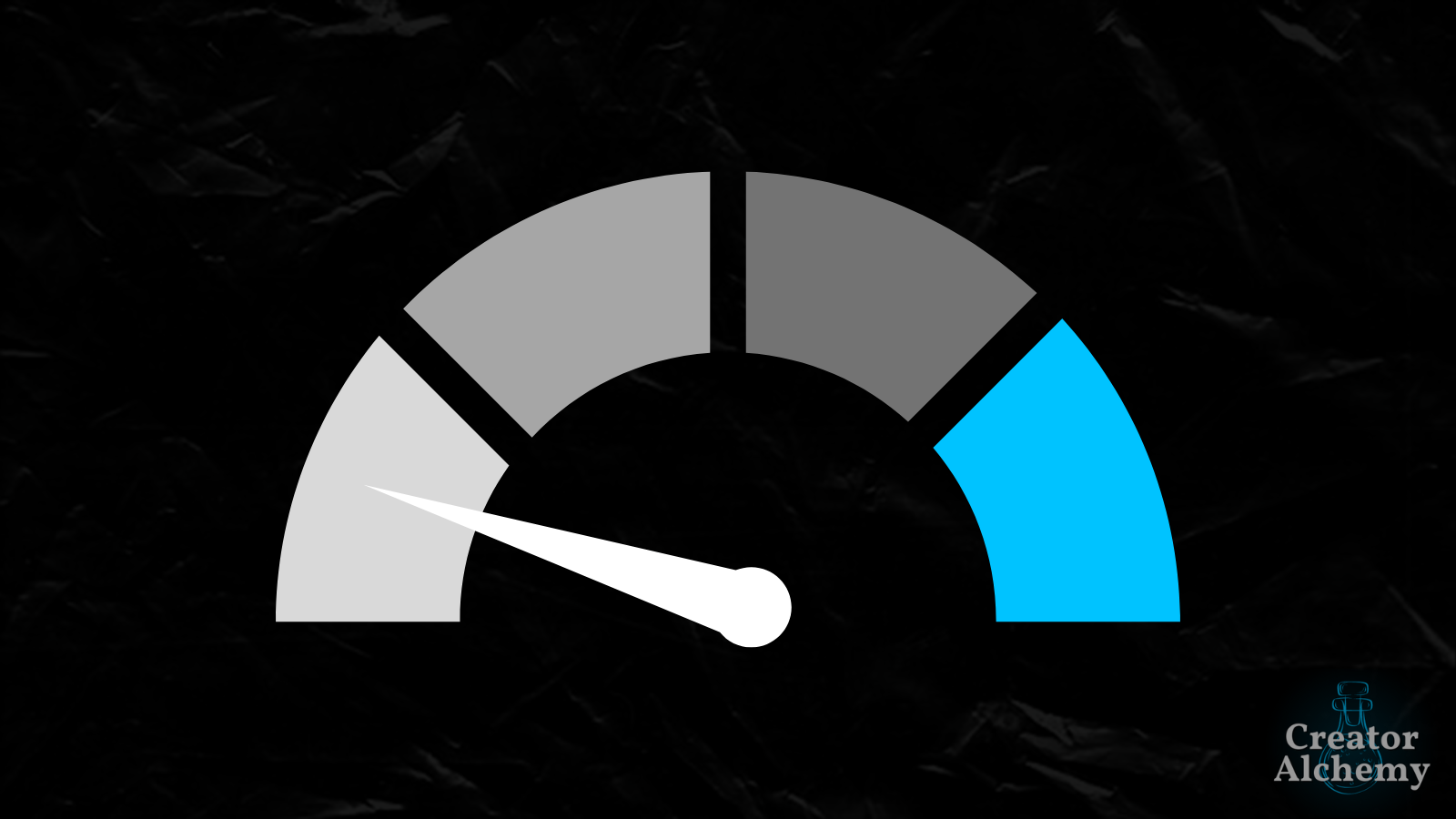
Let’s say you keep driving and see another herd of cows.
But this time, one of them is purple.
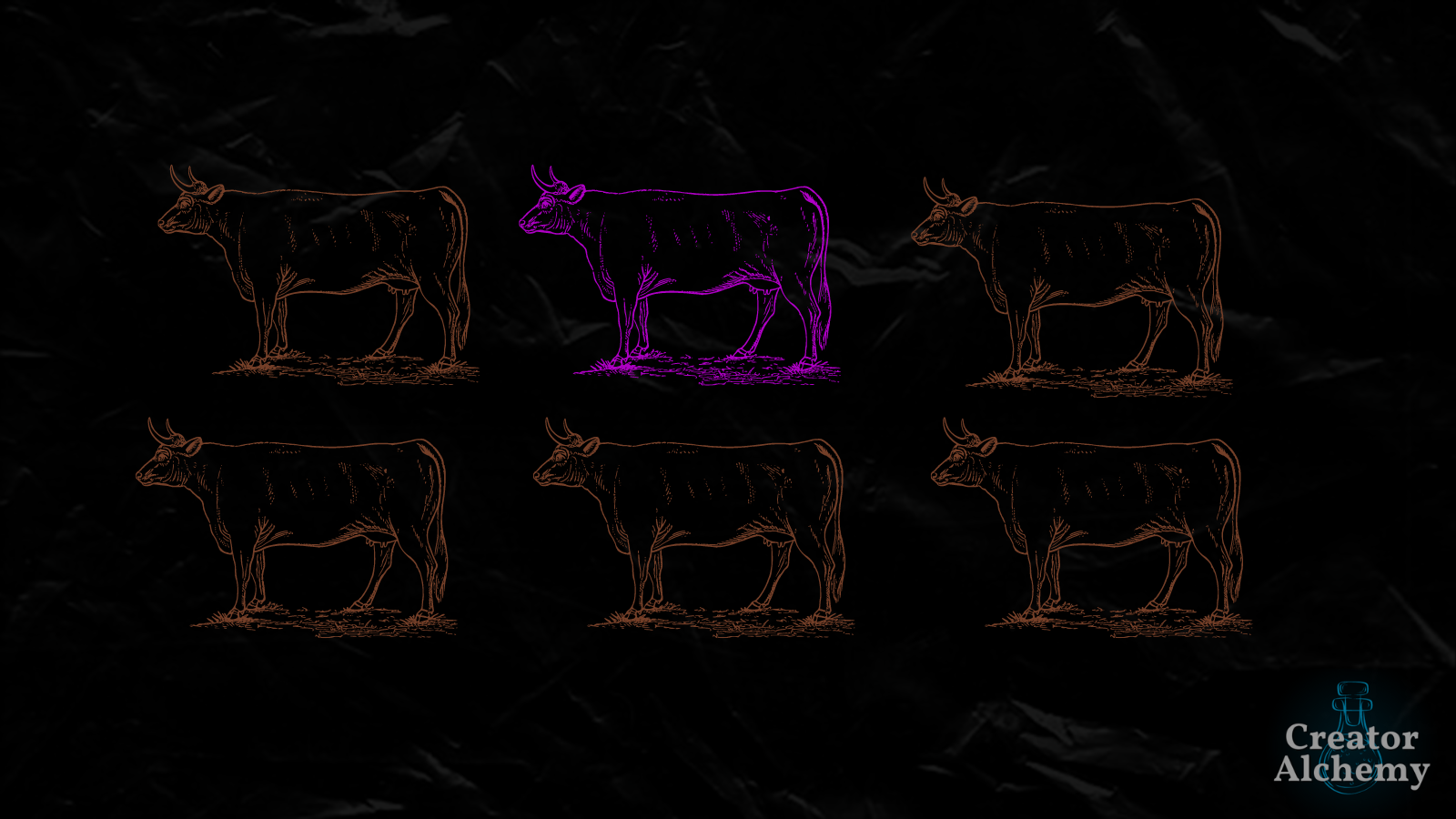
How remarkable is that?
If I had to gauge its remarkability, it’d be high—aka, remarkable af.
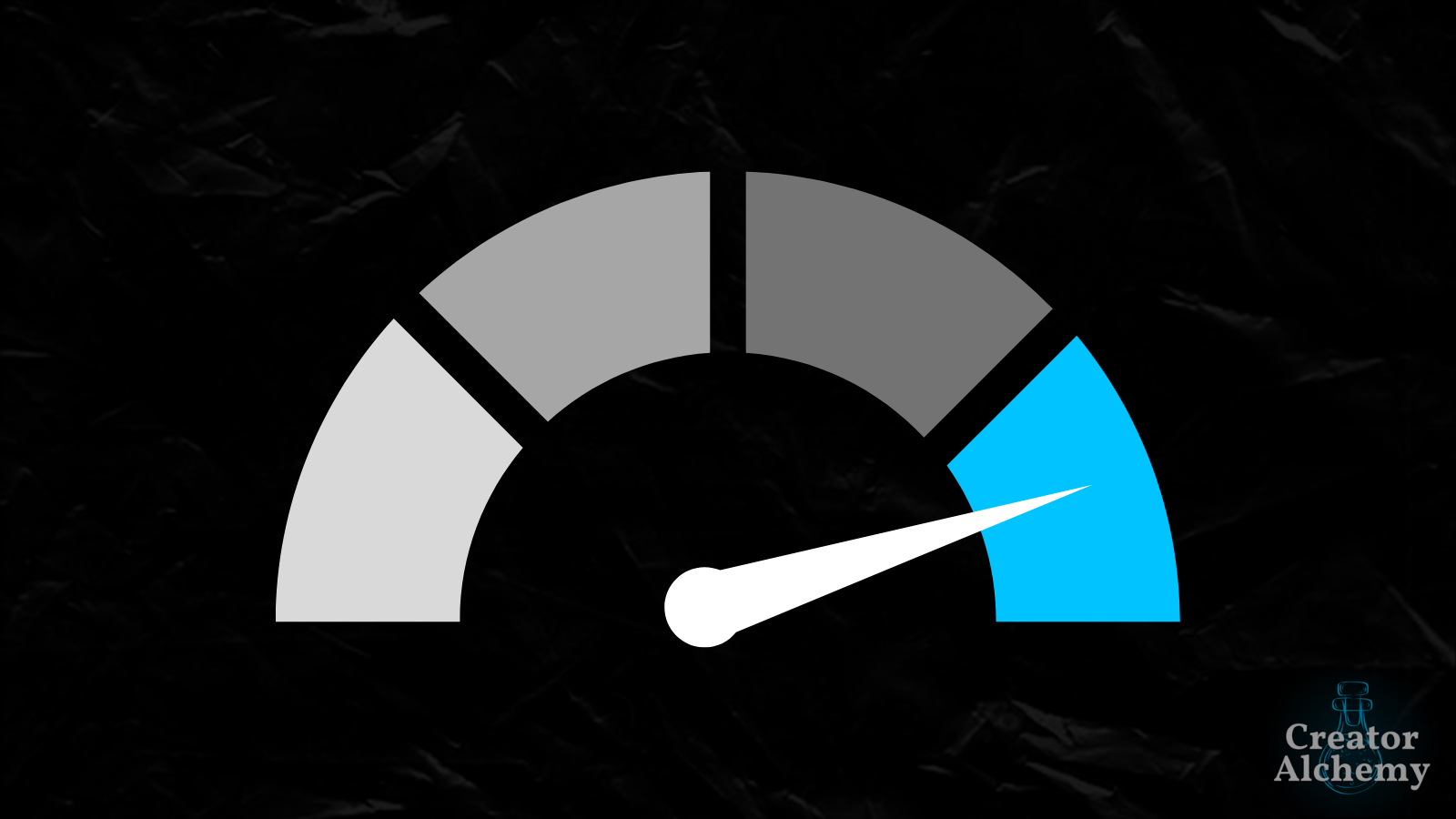
Remarkable content stands out from the crowd. It’s geared toward the frontrunners of your industry—the innovators, the thought leaders, the hyper-curious people actively looking for something different.
People remark on things that:
- Would be valuable to their audience
- Are personally valuable or memorable
- Offer a new, deep, and/or refreshing take on something familiar
- Gives them status in their community by being the first to share it with them
So I thought about what made me or my content remarkable.
One thing people regularly remark upon is that I’m a psychologist—few content creators are psychologists, and most psychologists who create content focus on mental health issues like depression, anxiety, trauma, etc. which I don’t. I don’t know of any other psychologist-coach-creators who focus on helping creators reach their potential through building fulfilling lives and thriving businesses aligned with their values.
If you know of some, let me know. Otherwise, I’m pretty sure I’m the only one—which is remark-able. It instantly gives my content a trust-boost because I’m not some threadboi who read the top 5 psychology books and started calling themselves a mindset expert.
Making remarkable content won’t let you down—it’s an amazing strategy that helps you create the most valuable content only you can make.
It helps you, to paraphrase Godin’s words, “avoid being a wandering generality and become a meaningful specific.”
But as helpful as this model is, it’s still missing something for me—connecting everything I create to a greater vision and finding the throughline…
So I kept searching, experimenting, and iterating.
Until finally, everything seemed to fall into place.
I found the throughline that united everything I wanted to do, and do it in a way that was sustainable and would evolve with me while providing insane value for my audience.
•••
Wilks’s Web
A while ago, Ali Abdaal and I were having lunch and I told him about my dilemma with how all the mental models I’d been trying kept falling short of my needs.
“Just write to me and Paul [Millerd],” he said.
It was one of the simplest, most profound pieces of advice I’ve ever heard.
And when I thought about it, my most popular content already followed this framework:
- I wrote “The Hidden Cost of Success and Why You Might Not Be Willing to Pay It” after a conversation with Khe Hy.
- I wrote the “Don’t Confuse Your Watchadoon” after watching multiple creator friends struggle to reach their goals.
- I wrote “How to Build Things People Can’t Wait to Buy” after a session with a coaching client.
- Hell, the entire reason I got to know Ali in the first place was after I wrote this piece.
The reason this approach works so well is simple: If I write an article targeted at a specific, high-level creator, not only will they find it valuable, but other creators will find it valuable, too.
After this realization, I created the framework I’ve been using ever since.
There may be other frameworks out there similar to this. But I don’t know about them and I’m writing this article, so I’m naming it after myself.
So here’s my new approach to creating content and running my business, and how I came up with it.
Introducing: Wilks’s Web.
The premise is simple: Pick influential thought leaders in your area (or niche), and create content specifically for them.
Because chances are that whatever insights or strategies you share to help them will help tons of other people in a similar situation.
At first, you’ll only have a few pieces of content.

But over time, you’ll create more high-quality content that targets different thought leaders in the same area (or similar areas).
Now, I think about people who inspire me and write content I think they’d find valuable.
It’s a great thought experiment:
- What would Ryan Holiday find valuable?
- What would Tim Ferriss share with his audience?
- What has Lex Fridman struggled with that I have unique insights about?
- What would Tom Bilyeu find so insightful, he’d invite me onto his podcast?
Try it for yourself and see what ideas it inspires.

Before long, you’ll have a solid web of interconnected content (notice how, even in this piece, I’ve linked to other articles I’ve written?).

And because you’re targeting thought leaders, when they find it valuable, they’ll want to share it with their audience.
For example, after I wrote the “The Hidden Cost of Success and Why You Might Not Be Willing to Pay It,” Khe shared it in his newsletter. Then Sahil Bloom came across it and shared it with his audience. Other creators read it, found it valuable, then shared it with their audiences.
This approach also taps into mimetic desire—”Sahil’s a smart person and he recommends Corey’s stuff. I’m a smart person and trust Sahil, so I’m going to follow Corey, too.”
Over time, other thought leaders will start noticing you and invite you to be in front of their audience. After Pat Flynn invited me onto his podcast, I told him he was an incredible interviewer and that it felt like he’d read all my stuff—even though I knew he hadn’t.
“I just put myself in my audience’s shoes and ask questions they’d want to know,” he said.
Suddenly, you get an influx of new people checking out your content.
And because your ideas are “sticky,” aka, memorable, people tend to check out other stuff you’ve created and keep coming back for more.

But Corey, how do I make money with this strategy unless these thought leaders want to work with me 1:1?
Great question.
You could only offer 1:1 services, but here’s a more interesting (and scalable) spin…
You can work with some thought leaders, then create courses and other offers to help other people get similar results.
For example, I wrote an article targeted at Ali. Then I ended up coaching him for 6 months. Then I created Intentional Life Design which included the exact same frameworks I use with coaching clients like Ali.
So the value prop is “Hey, Ali got great results and endorses what I do. Do you want similar results? Cool, here’s a course you’ll love.”
Now, you have tons of valuable free content that links to other free content, plus ways for your audience to invest via your paid offers—all of which are interconnected.
Over time, you gain better insights into thought leaders and what they’d find valuable, so you can create even better, nuanced, deep content.

Over time, you’ll build a web that’s made up of remarkable pieces of content that tap into word of mouth.
You’ll attract tons of people—some might be “fish,” but others will be “whales”—but everyone gets tons of value.
And your free content qualifies people by helping those who aren’t ready to invest now develop the skills to succeed so they can engage with your paid offers in the future.
Every piece of content is sticky and interconnected—it’s valuable, it’s memorable through metaphors or coined terms, it resonates through storytelling only you can do (so you don’t have to panic about AI or SEO changes taking your job like mediocre creators do), and it allows you to make a living doing what you love.

So you get to spend your time building your web instead of chasing, fishing, foraging, hunting, or whatever everyone else is doing.
Your job is to just keep weaving.
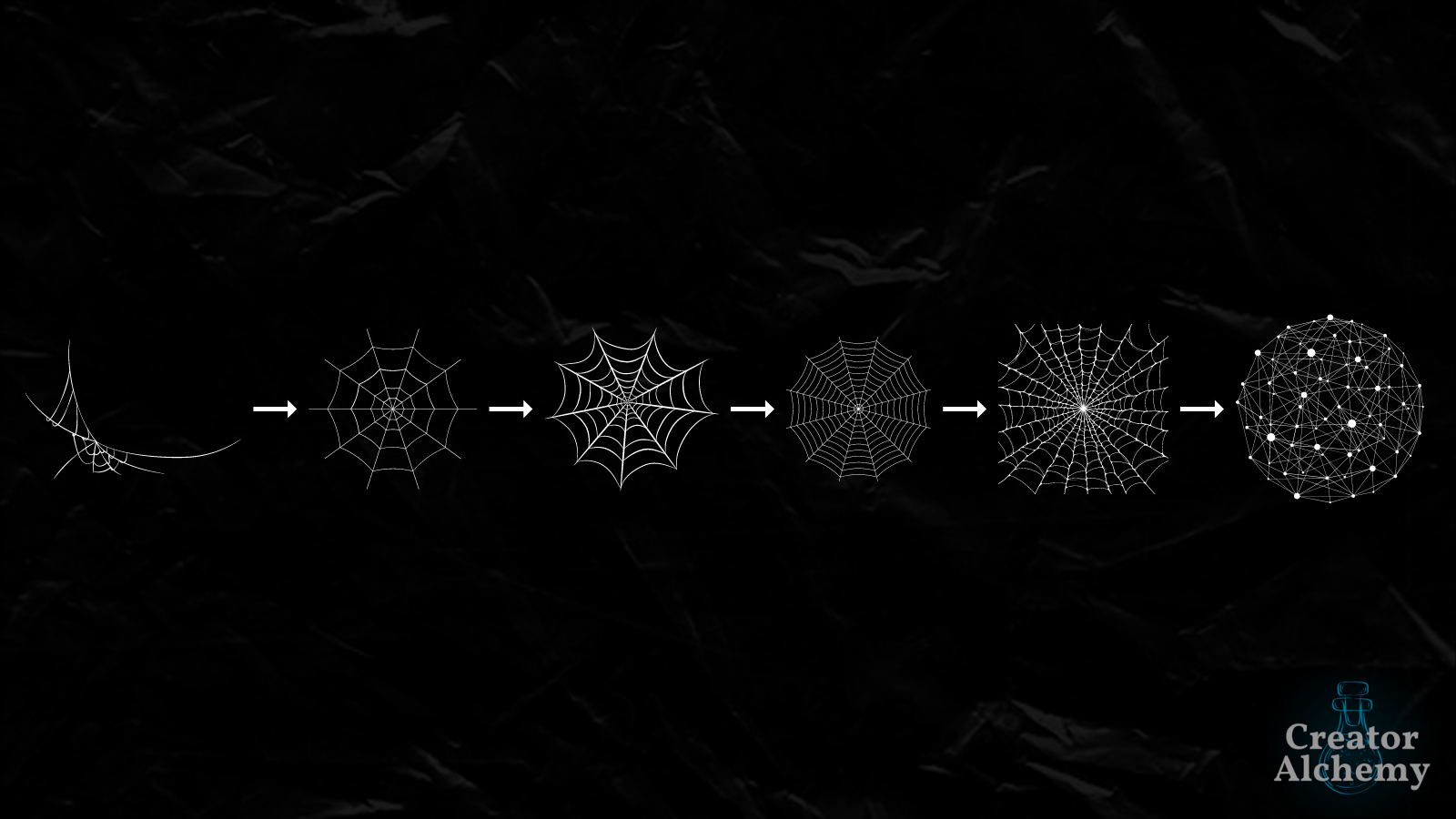
Over time, it’ll attract life-changing opportunities.
Because it already has for me.
And I know it can for you, too.
It doesn’t matter how intricate your web is today. As long as you keep weaving, it’ll get there.
•••
Final Thoughts
Hormozi’s Hierarchy is great because it helps you craft a funnel and put out content that’s accessible to more people. But I don’t want to target beginners with all my free content because I don’t think it’s remarkable enough for my ideal audience.
Molina’s Magnet is great for clarifying how to create content that attracts people who will invest their time, energy, and attention instead of building a low-quality audience. But it’s easy to create content that excludes people who could benefit from what you have to say if you’d intentionally made it more inclusive.
Godin’s Gauge gives you a great mental model for creating content people can’t wait to share with others. But remarkability doesn’t equate to a seamlessly interconnected system of content that continues to grow.
But Wilks’s Web has all the advantages of the other three and addresses their respective weaknesses—at least, for what I’m trying to create.

This is the “secret” behind how I’ve been able to become friends with creators who inspired me for years. Don’t get me wrong, they still inspire me. I just happen to be able to hang out with them now.
I literally have a Notion page called “Future Friends List.” It’s a running list of incredible creators who inspire me who I’d love to one day become friends with. Not just work with them or get on their podcast or something. Legitimately be friends with.
Imagine being able to just text your favorite writers or go grab coffee with your favorite YouTubers.
That’s the power of this strategy.
It’s not about money or fame.
It’s about building an invaluable network of incredible people through creating incredible content.
I’m not a celebrity. I’m not a thought leader. I’m not well connected.
So my only hope of becoming friends with these people, and helping tons of others along the way, is to weave a web of insightful content so valuable and unique, people can’t wait to share it with others.
Finally, it feels like I’ve found a framework that works for me. I have clarity on how I can create content my ideal audience loves and weave it all together with everything else I create.

